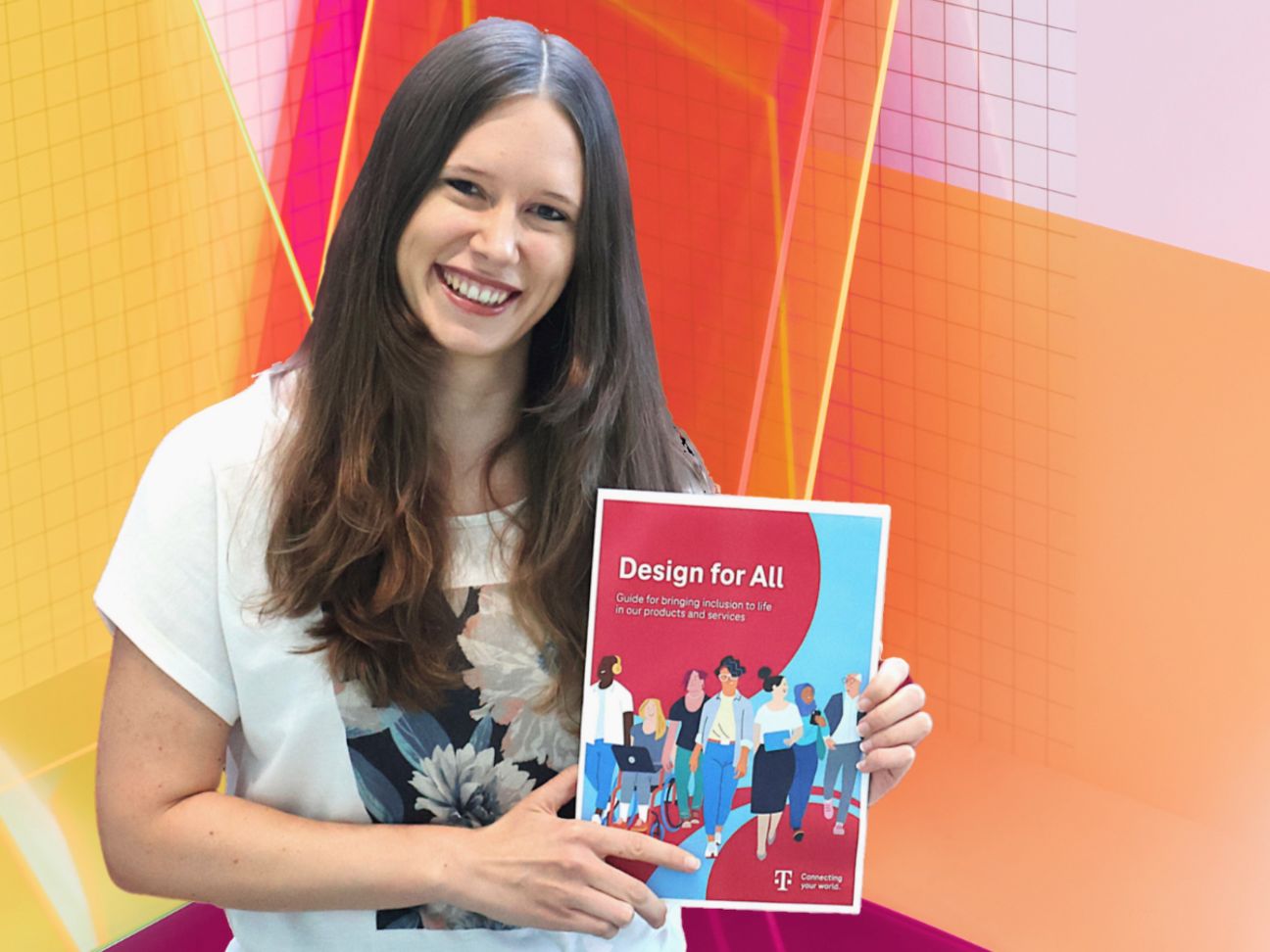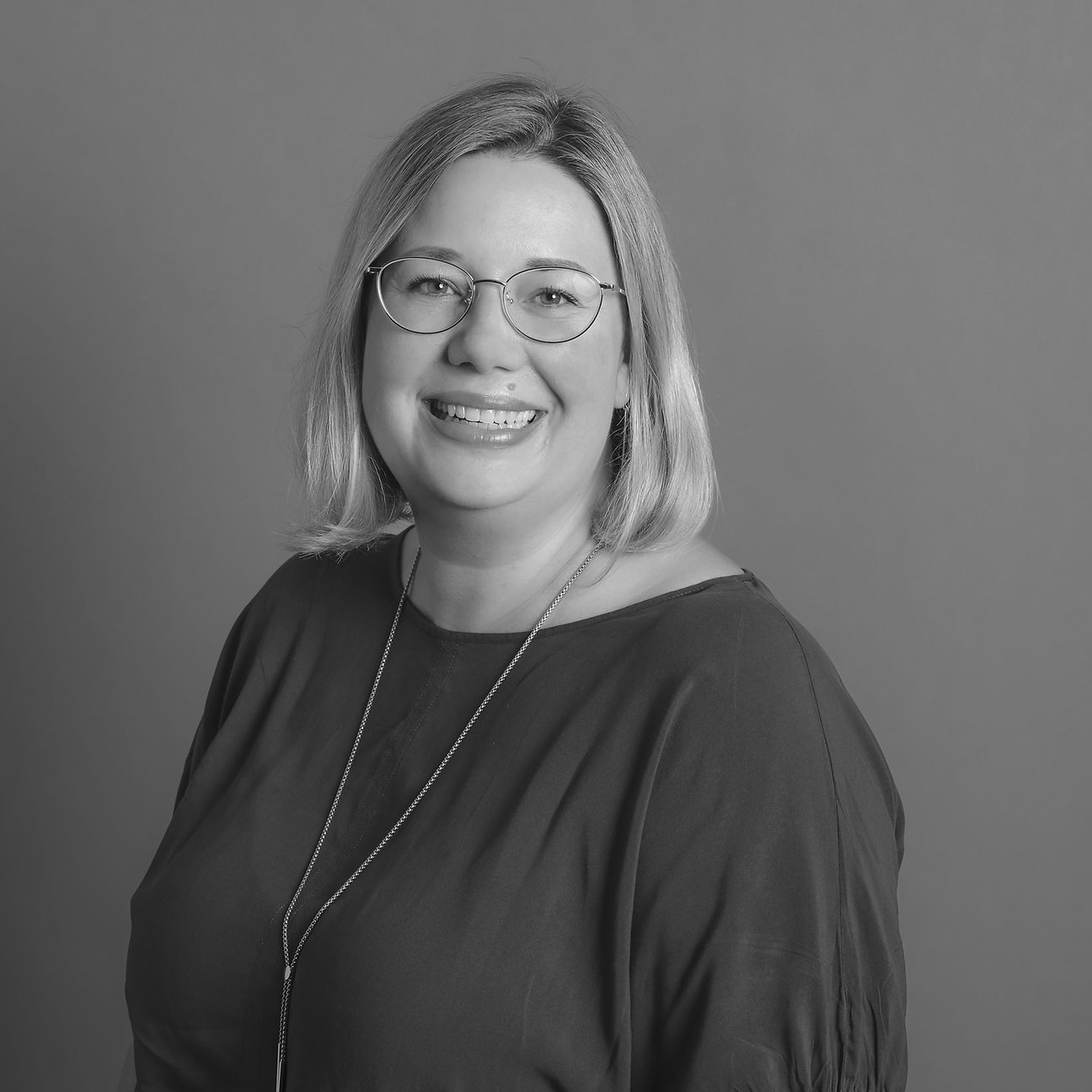"Design for All” – rethinking on a grand scale
At Deutsche Telekom, we are committed to digital inclusion and equal opportunities. However, our products and services are often only suitable for certain people and target groups. With “Design for All”, we want to ensure that more people have better and easier access. At Telekom, Annika Theiß from Group Corporate Responsibility is committed to this cause.
Annika, why do we need “Design for All?
Annika Theiß: "Design for All” means designing things so that they work well for everyone. In other words, our products and services should be free of barriers and discrimination. To achieve this, a wide range of human diversity must be considered from the very beginning of the development and design process, such as people of different genders, ages, or mental and physical abilities. Not only is this the right thing to do, but it also has significant market potential.
What are the consequences of not considering diversity from the start?
Annika Theiß: A few examples: Voice recognition often doesn't work for women and children because 70 percent of the voice data used to train the AI is male. Or facial recognition: It works significantly better for white people than for people of color. Many older adults struggle to use technology. Simplification would not only benefit them, but everyone. There are so many areas where improvements can be made. But it will take a lot of rethinking, including within our company.
But aren't only a few people affected?
Annika Theiß: On the contrary! In a recent Eurostat study, a quarter of all people living in Europe reported having a long-term impairment or disability. In addition, there are people with temporary limitations, such as those resulting from injuries like a broken arm or illnesses like tinnitus. Older adults, women, children, people of color, and individuals with different gender identities should also be considered by our experts from the beginning during programming, product development, and design. This is still far too rare today.
Is there an example of a simplification that benefits everyone?
Annika Theiß: Yes, for example, the zoom feature on iPhone helps people with visual impairments, and it's also very popular with people who don't have their glasses handy or have tired eyes. In addition to its screen-reading software, VoiceOver, Apple offers other accessibility features for people with motor and cognitive impairments. This makes Apple devices not only accessible, but also easy to use for a wide range of people - and that's the heart of the brand!
Isn't there also a new accessibility law coming soon?
Annika Theiß: Yes, the European Accessibility Act will come into effect in Germany in June 2025. If companies do not meet these requirements for accessible usability of products and services, products and services could be banned or recalled. Fines could also be imposed - not to mention reputational damage.
What are we already doing at Telekom - do you have any positive examples?
Annika Theiß: The video-based live chat in sign language for customer service comes to mind. Or the Telekom MMS team. They have been advising on accessibility and software ergonomics in digital applications for years and now also offer a "Design for All" assessment. At the same time, I want to be transparent and make it clear that we still have many challenges and a long way to go. "Design for All” requires a cultural change, and that takes time.
How are you and your team contributing to “Design for All”?
Annika Theiß: We have developed support for implementation in the Telekom segments, such as the “Design for All Guide” or the Basic Training. In addition, a year ago we set up a sounding board consisting of various internal and external experts. They can evaluate products and services and collect ideas for improvements in the spirit of “Design for All”. It is incredibly enriching to have so many different perspectives coming together. One can tap into this knowledge – it truly opens your eyes and broadens your horizons.
Annika, if I were a product developer, what would be your tip for me?
Annika Theiß: The earlier you consider "Design for All" in the development and design process, the better. Otherwise, it often remains a cumbersome task of retrofitting the finished product. Therefore, I have three tips:
• Train AI with diverse and balanced datasets!
• Include people from various dimensions of diversity early in the testing process!
• Bring diversity into development and management teams! The more diverse the perspectives within a team, the more holistic the consideration of human needs.
And with that, have fun with "Design for All"! 😊


